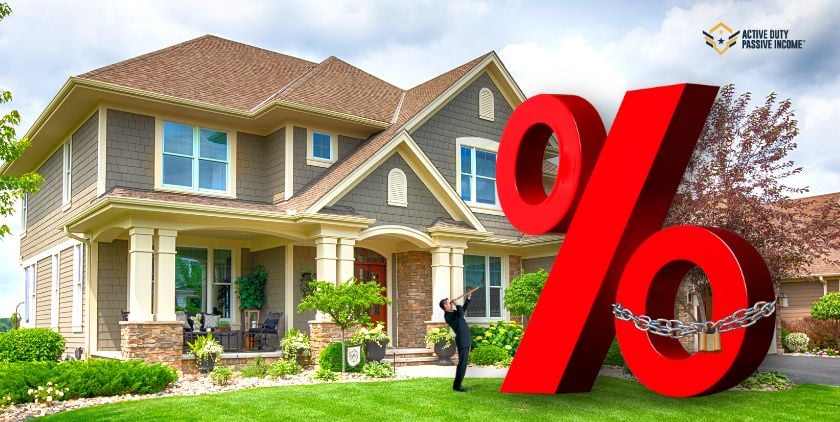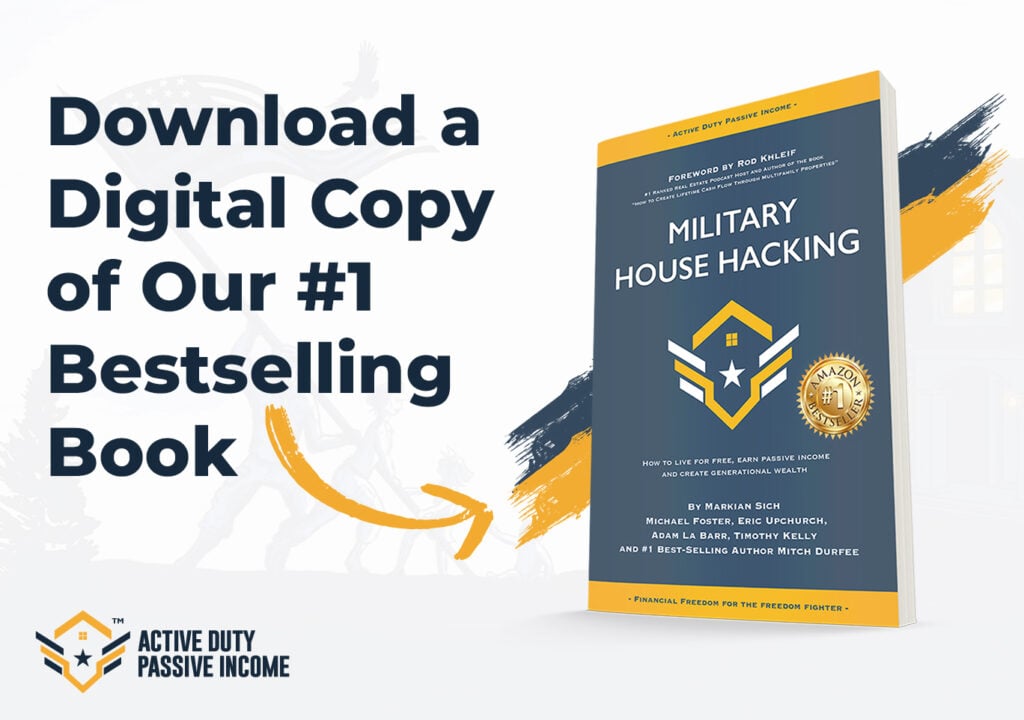Mortgage rate lock and rate lock extension fees are important variables future homeowners should know about, especially with the current fluctuations of housing interest rates. A mortgage rate lock is a commitment by a lender to provide a borrower with a specific interest rate for a certain period during the home buying process. This can protect the borrower from rising interest rates during that time. This blog is intended to help individuals understand mortgage rate lock and the extension fees. By educating yourself before you start the buying process, it will alleviate some of the stress associated with the homebuying process.
What is a Mortgage Rate Lock?
A mortgage rate lock is an agreement between a borrower and a lender that guarantees a specific interest rate for a certain period of time, typically 30 to 60 days, but sometimes up to 90 days or longer. The rate lock provides protection for the borrower against interest rate increases during the period between application and closing of the mortgage loan.
When a borrower locks in a mortgage rate, the lender guarantees that the interest rate will remain the same for the duration of the lock period, regardless of any changes in market conditions. This means that the borrower can budget for a fixed monthly mortgage payment during the lock period, which can provide peace of mind and stability during the home buying process.
However, it’s important to note that a rate lock typically comes with conditions, such as a deadline for closing the loan, and may require payment of a fee or points to secure the rate. Borrowers should carefully review the terms of the rate lock agreement and be prepared to close the loan before the lock period expires to avoid losing the locked-in rate.
When Should You Request a Mortgage Rate Lock?
A mortgage rate lock is usually requested when a borrower has found a property they want to purchase and has completed the initial stages of the mortgage loan application process. Once the borrower has found a property and is ready to move forward with the loan application, they should discuss the available interest rates and loan programs with the lender and request a rate lock if they are satisfied with the rate being offered. It is important to note that most lenders will require the borrower to provide certain information and documentation before a rate lock can be put in place, such as a signed purchase agreement, proof of income, and verification of employment.
Borrowers should also be aware that mortgage rates can fluctuate based on market conditions, so it’s important to consider factors such as the current interest rate environment and economic outlook when deciding whether to lock in a rate.
- If interest rates are expected to rise soon, it may be advantageous to lock in a rate sooner rather than later.
- If rates are expected to remain stable or decline, it may make sense to wait before locking in a rate.
Borrowers should work closely with their lender to understand their options and make an informed decision that best suits their needs.
How Long Can You Lock in a Mortgage Rate?
The length of time that a mortgage rate can be locked in varies depending on the lender and the type of loan program. In general, rate lock periods can range from 30 days to as long as 90 days or more.
The most common rate lock periods are 30, 45, 60, or 90 days. During this time, the lender guarantees the borrower a specific interest rate, regardless of any changes in market conditions. This can help borrowers budget for a fixed mortgage payment during the rate lock period and provide peace of mind during the home buying process.
However, it’s important to note that a longer rate lock period may come with a higher cost or require the borrower to pay additional fees or points. The cost of a rate lock can vary depending on the lender, the length of the lock period, and other factors.
Borrowers should carefully consider the length of time they need to close on the loan and whether a rate lock is worth the cost. It’s also important to understand the conditions of the rate lock agreement, such as the deadline for closing the loan and any requirements for documentation or information from the borrower.
Advantages of a Mortgage Rate Lock
There are many advantages to a mortgage rate lock, such as:
- Protection against interest rate increases, providing peace of mind during the home buying process.
- Certainty in budgeting with fixed monthly mortgage payments, aiding accurate financial planning.
- Time to prepare for closing, facilitating smooth loan processing.
Overall, a rate lock is a valuable tool for borrowers seeking certainty and protection against rising interest rates. However, it’s essential to consider the costs and weigh the pros and cons before making a decision.
Disadvantages of a Mortgage Rate Lock
However, there are disadvantages that should be considered:
Potential missed opportunities if interest rates decrease during the lock period.
- Costs associated with rate locks, including fees, higher costs for longer lock periods, and additional fees or points.
- Limited flexibility due to the commitment to close within a specific timeframe which may limit their flexibility to change their plans or adjust the loan terms.
Overall, while a rate lock provides certainty and protection against rising interest rates, it’s crucial to carefully consider the costs and evaluate the pros and cons before deciding.
How Much Does a Rate Lock Cost?
The cost to rate lock can vary depending on the lender, the type of loan program, and the length of the lock period. Some lenders may offer rate locks for free as a standard part of their loan process, while others may charge a fee.
In some cases, lenders may require the borrower to pay a rate lock fee upfront, while in other cases, the fee may be rolled into the overall loan costs. The cost of a rate lock can range from a fraction of a percentage point to a full percentage point or more, depending on the lender and the length of the lock period. Typically rates range between .25% to .50% of your loan.
It’s important to carefully review the terms of the rate lock agreement and understand all associated fees and costs before agreeing to lock in a rate. Borrowers should also compare rates and fees from multiple lenders to ensure they are getting the best possible deal.
How to Lock in Your Mortgage Rates
Step 1. Shop around for lenders
Research and compare lenders to find the best rates and terms that meet your needs. You can do this by checking online, consulting with a mortgage broker, or contacting multiple lenders directly.
Step 2. Complete your loan application
Once you’ve chosen a lender, complete your loan application and provide any necessary documentation, such as income and employment information, credit reports, and bank statements.
Step 3. Choose your rate lock period
Work with your lender to determine the length of time you want to lock in your rate. Generally, rate lock periods can range from 30 days to as long as 90 days or more.
Step 4. Agree on the rate lock terms
Review and agree on the terms of the rate lock agreement, including any associated fees or costs. Be sure to read the fine print carefully to understand the conditions of the rate lock and any potential consequences for failing to meet the requirements.
Step 5. Lock in your rate
Once you’ve agreed to the rate lock terms, your lender will lock in the interest rate for the specified period of time. Make sure to get written confirmation of the rate lock from your lender.
Step 6. Close on your loan
Work with your lender to gather all necessary documentation and information to close on your loan within the rate lock period. Be sure to meet all deadlines and requirements to avoid any potential penalties or fees.
Can Your Interest Rate Change After a Mortgage Rate Lock?
In general, a mortgage rate lock is a guarantee, usually until the closing of your loan. However, there are certain situations where your interest rate could change after a rate lock. Here are a few reasons why this might happen:
- Failure to meet deadlines: Most rate locks come with specific deadlines and requirements that must be met by the borrower, such as providing necessary documentation or closing the loan within a certain timeframe. If you fail to meet these deadlines or requirements, the lender may adjust the interest rate or cancel the rate lock altogether.
- Changes to the loan terms: If you make changes to the terms of your loan after the rate lock has been set, the lender may adjust the interest rate accordingly.
- Market fluctuations: If interest rates increase significantly during the rate lock period, the lender may adjust your rate to reflect the new market conditions.
- Delays in closing: Even if you meet all deadlines and requirements, there may be delays in the closing process that could extend beyond the rate lock period. If this happens, the lender may require you to pay an extension fee or adjust the interest rate to reflect the new market conditions.
Always carefully review the terms of your rate lock agreement and understand all potential risks and consequences before agreeing to lock in your rate. Be sure to ask your lender about any potential factors that could affect your rate and what steps you can take to protect yourself against unexpected changes.
What is a Mortgage Rate Lock “float down”?
A mortgage rate lock float down is a feature that some lenders offer that allows borrowers to lower their interest rate if market rates decrease after they have locked in their rate.
When a borrower locks in their interest rate, they are essentially guaranteed a specific interest rate for a certain period of time, regardless of any changes in the market. However, with a rate lock float down, the borrower has the option to “float down” to a lower interest rate if the market rate drops before the loan closes.
Typically, a rate lock float down will come with certain conditions and restrictions, such as a limit on how much the rate can be lowered and a fee for the float down option. The float down may also only be available for a limited time after the initial rate lock, such as 30 or 60 days.
A rate lock float down can provide borrowers with additional flexibility and protection against unexpected changes in the market. However, it’s important to carefully review the terms and conditions of the float down option and understand any associated fees or restrictions before agreeing to it.
Does My Loan Type Affect the Mortgage Rate Lock?
Different loan types can have different interest rates and rate lock policies. For example, conventional loans and government-backed loans such as FHA loans and VA loans may have different interest rates and rate lock policies. In general, conventional loans may have stricter requirements for rate locks, while government-backed loans may have more flexible options.
Additionally, the length of the rate lock period may vary depending on the loan type. For example, some lenders may offer shorter rate lock periods for adjustable-rate mortgages (ARMs) than for fixed-rate mortgages.
Make sure you understand the terms and conditions of the rate lock, including the length of the lock period, any fees or restrictions, and any potential for the rate to change.
What is the Mortgage Rate Lock Extension Fee?
A mortgage rate lock extension fee is charged by lenders when the borrower needs to extend the rate lock period. It is typically imposed due to delays in the loan process, such as appraisal or underwriting issues. The fees can vary based on the lender and loan terms, ranging from a few hundred dollars to several thousand dollars. Some lenders may have a limit on the number of extensions allowed. Before agreeing to a rate lock extension, carefully consider the costs and benefits, as it may be more cost-effective to let the lock expire and re-lock later if market conditions permit. Discuss options with your lender and understand all associated fees and costs before deciding.
How Much Are Rate Lock Extending Fees?
Rate lock extension fees vary based on the lender and loan terms. Typically, the fee is a percentage of the loan amount or a set fee per day or week of the extension, ranging from around 0.25% to 0.375% of the loan amount. Some lenders may charge a flat fee, such as $500 per week.
If you anticipate needing an extension, inquire about the lender’s policy and fees before agreeing to the initial rate lock.
How to Avoid Mortgage Rate Lock Extension Fees
To avoid rate lock extension fees, plan ahead and minimize loan process delays with these tips:
- Choose a realistic lock period: Align it with the typical loan timeline and potential delays.
- Be prepared and organized: Provide necessary documentation promptly and communicate with your lender.
- Schedule inspections early: Allow time for repairs or follow-up inspections.
- Avoid major financial changes: Steer clear of new credit accounts or debt during the loan process.
- Consider a longer lock period: If expecting delays, opt for a longer lock initially to avoid extensions.
Follow these tips, work closely with your lender, and minimize delays and extension fees.
ADPI Pro Tips
- Timing is Everything: Keep an eye on interest rate trends and market conditions. If rates are expected to rise soon, it may be wise to lock in a rate sooner rather than later.
- Don’t Settle for the First Lender: Shop around and compare offers from different lenders. You never know when you might find a hidden gem with better rates and terms.
- Negotiate, Negotiate, Negotiate: Don’t be afraid to negotiate the terms of your rate lock with the lender. Ask about any potential discounts, waivers, or rate adjustment options to make the deal work better for you.
This blog was written in collaboration with our absolutely amazing DoD SkillBridge employees: Bethany and Seneca












